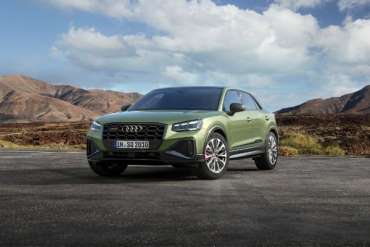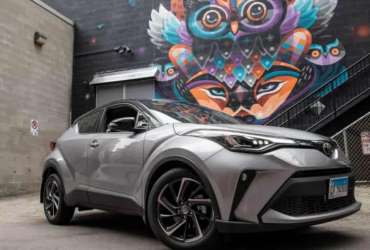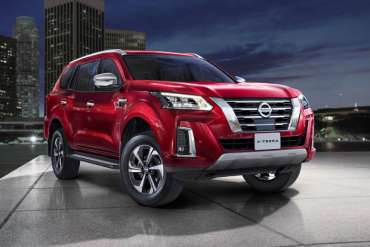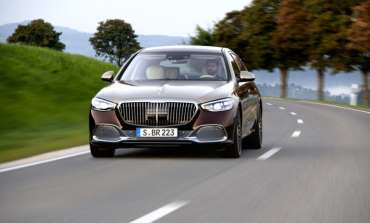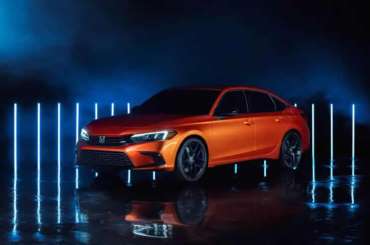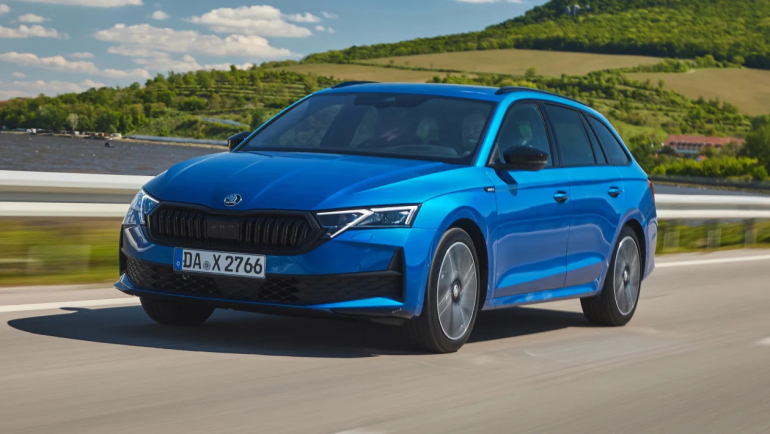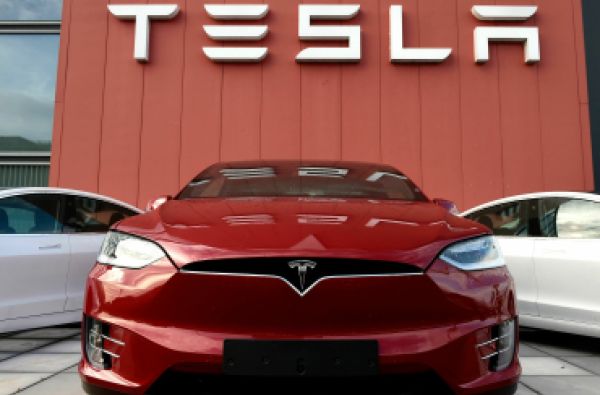
Worldcarblog.com
The Audi SQ2 2021 is coming
Audi has updated the style and available technology of its SQ2 crossover, which should be available in early 2021, as pre-sales have already started in Germany and other European countries.
The price of the Audi SQ2 for 2021 starts at 45,700 euros in Germany, while buyers from Great Britain will have to spend 38,700 pounds. Neither SQ2 nor Q2 are available in North America.
The 2.0 TFSI engine is the same as before, generating 300 hp and 400 Nm of torque with a standard seven-speed S tronic transmission and quattro all-wheel drive. The SQ2 accelerates to 100 km / h in just 4.9 seconds, while its maximum acceleration is limited to 250 km / h.
The redesigned look is immediately visible as soon as you take a look at the car. The octagonal Singleframe grille is now slightly lower, and the bumpers and air intakes have been redesigned and more aggressive. Although LED headlights are available as standard, Audi will now offer new Matrix LED units as optional accessories. The SQ2 also comes with LED rear lights, paired with dynamic indicators.
On the sides, the redesigned SQ2 features aluminum-looking mirror housings, aluminum sill inserts and a spoiler on the roof edge.
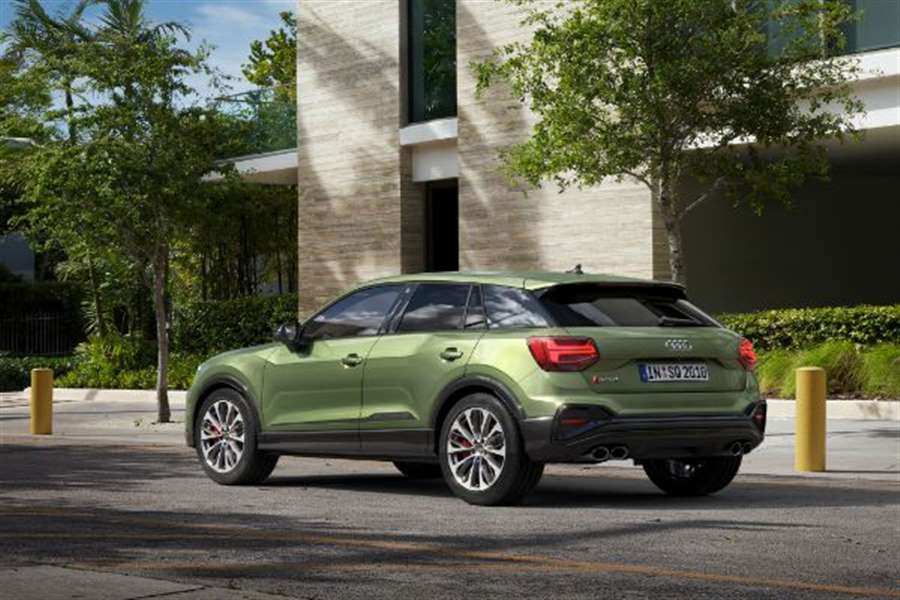
As for the interior, the 2021 SQ2 has automatic air conditioning as standard, along with a sporty multi-purpose steering wheel and sports seats. As for the information and entertainment program technology, it has been maximally improved and refreshed with the latest programs and maps.
Finally, Audi also left up advanced safety systems. The SQ2 not only comes standard with Audi's pre-designed front safety system, but also adaptive cruise control, which is a new addition to the optional equipment. Adaptive driving assistance allows the driver to relinquish control of the car during acceleration, deceleration and steering.
2020 Toyota C-HR Review: Fun Over Function
The verdict: The 2020 Toyota C-HR uses its funky styling (mostly) to its advantage, with a generous helping of standard safety features.
Versus the competition: The class of faux SUVs — lifted hatchbacks with SUV-like styling and cargo space that don’t even offer all-wheel drive — is growing, but the C-HR still stands out among the crowd thanks to its driving experience and safety features, not just its styling.
Though we usually let the images represent what a vehicle looks like, it’s hard to talk about the C-HR without at least acknowledging its styling. I called it ugly before it even went on sale, but I’ve actually mellowed in the years since. The sharp angles may not be for everyone, but at least it isn’t a generic blob or a traditional-looking SUV. The C-HR’s funky looks may even make it more appealing — at least to buyers looking to stand out in a sea of blah vehicles.
The 2020 C-HR has revised front styling, including new headlamps, but you’d be hard-pressed to discern what’s different without putting the two side by side. There are also new wheel designs to choose from.
Besides that, this is still the small, lifted hatchback that Toyota — and Cars.com, perhaps grudgingly — calls an SUV, despite its being exclusively front-wheel drive. It competes with similar FWD-only tall cars like the Hyundai Venue, Kia Soul and Nissan Kicks (see them compared).
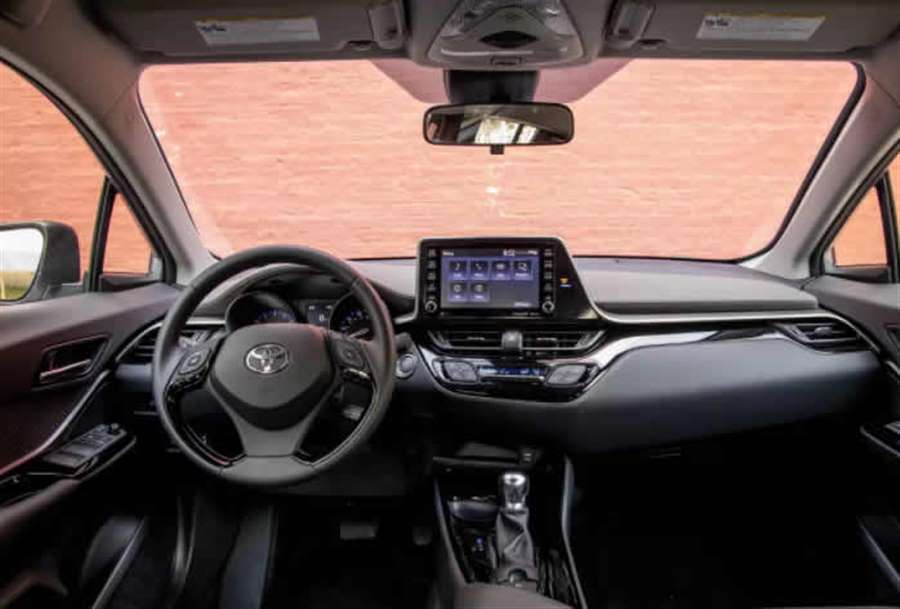
Interior and Cargo
The C-HR’s interior, particularly in the Limited trim I tested, has some hits and misses — not unexpected in a car costing less than $30,000. There’s decent leather upholstery on the Limited, and most of the hard surfaces don’t feel overly cheap, if not very upscale. Like on the exterior, there are fun aesthetic touches inside, such as textured plastic inserts in the door panels and oval designs scooped out of the headliner. Neither adds function or feels high-end, but they do add a touch of whimsy that I appreciate.
Another hit is the 8-inch touchscreen, which is flanked by physical buttons that control various functions, as well as volume and tuning knobs. The system operates quickly and the graphics are clear, if a bit dated. Apple CarPlay and Android Auto — the latter new for 2020 — are standard. Below the screen and central air vents are the climate controls, which are simple and easy to use.
Not so easy to use were the menus in the gauge cluster, which could display a variety of information (including the G-forces the C-HR was experiencing while driving) but not a digital tire pressure readout. Toyota buried the C-HR’s drive modes in there, too, making it a pain to switch modes. I accidentally stumbled across the modes the first time I drove the C-HR, but the next time I got in, I had to pull over and read the owner’s manual to figure out how to change them. Just give me a physical button or switch, please.
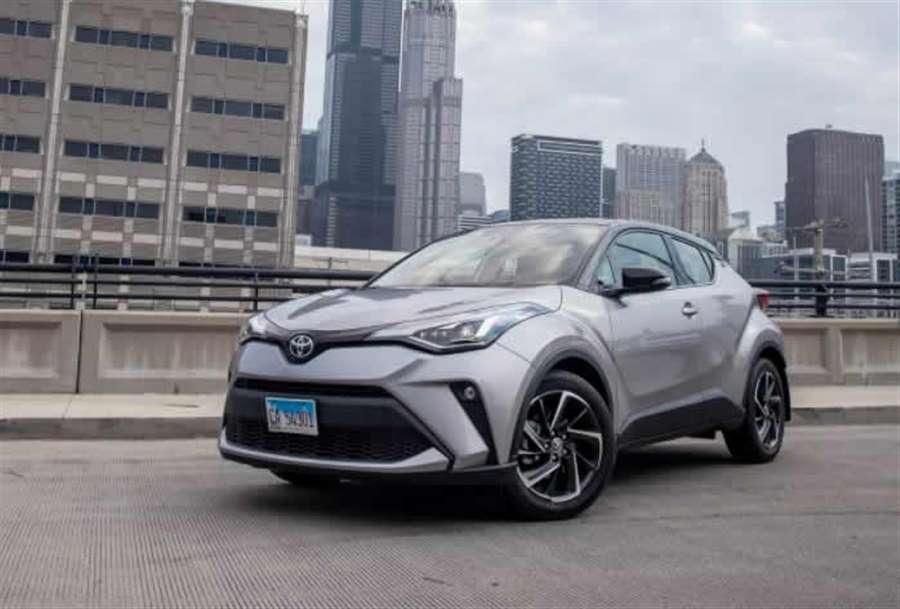
Another miss is in the rear. Surprisingly, I had ample legroom and a decent amount of headroom in spite of the C-HR’s compact size and sloping roofline, but its high beltline and tiny rear window contributed to a very enclosed feeling overall. It reminded me of sitting in the window seat on a plane when the window doesn’t line up with the row of seats and you have an obscured view the whole flight. ([Seinfeld voice] What’s the deal with that?) It’s not ideal, and it’s a direct consequence of the C-HR’s styling.
As for the cargo area, with the backseat upright, Toyota estimates the space at 19.1 cubic feet. In practice, it was enough for a pretty significant grocery run and would probably suffice for two adults’ luggage for a weeklong trip (though some stacking may be involved). With the backseat folded, the C-HR takes advantage of its extra length better than the rest of the faux SUV class — it’s more than a foot longer than the Venue, half a foot longer than the Soul and a few inches longer than the Kicks — to offset its low roof and increase cargo volume to 37 cubic feet (again, according to Toyota; we’ve found manufacturers to be inconsistent with such measurements).
What’s It Like to Drive the C-HR?
The “C” in C-HR stands for “coupe,” so you’d be right to expect a sporty — or at least sportier — driving experience. (“HR” is for “High Rider,” because it sits a little higher.) And there is some of that sportiness there, with direct, communicative steering and nimble handling that make the C-HR feel like it can be pushed harder than the Venue or Kicks.
The 144-horsepower, 2.0-liter four-cylinder engine also makes more horsepower than the Venue or Kicks, but it needs to; the CH-R outweighs those models by a substantial 743 and 609 pounds, respectively (comparing base trim levels). The Toyota has a continuously variable automatic transmission that leads to a great deal of droning noise at higher speeds or under aggressive acceleration. It also does a poor job of mimicking a traditional automatic transmission, leading to a noticeable rubber-band feeling when you hit the gas. That makes highway driving a bit of a chore, with a noticeable wait for passing power and added engine noise.
The 2020 C-HR’s gas mileage is at the bottom of this subclass, rated by the EPA at 27/31/29 mpg city/highway/combined with its standard four-cylinder engine. That’s a lower combined rating than the Kicks, Venue or Soul with its standard four-cylinder engine. If you get the 201-hp, 1.6-liter turbo four in the Soul, the combined ratings are the same, but the Soul Turbo is rated at 32 mpg on the highway.
The sportiness also makes for a firm-feeling ride — not uncommon for a small car, but the 18-inch wheels on my test car likely didn’t help. The LE gets 17-inch wheels, while the mid-range XLE also rides on 18s. Despite the harsher ride, the C-HR remained composed over broken pavement and expansion joints.
Visibility is another casualty of the C-HR’s styling, with the raked windshield putting the A-pillars in the way of traffic and pedestrians approaching from the sides, and the small rear windows and door windows make it more difficult to see what’s around you.
Safety
Fortunately, Toyota includes a full complement of standard safety tech on all C-HRs as part of its Safety Sense suite, helping mitigate its limited visibility. Those features include forward collision warning with automatic emergency braking and pedestrian detection, lane departure warning with lane keeping assist, adaptive cruise control, and automatic high beams. Adaptive cruise control is a nice touch for the class, particularly as a standard feature. Only the Soul Turbo offers it as an option; it’s not available on the Kicks or Venue.
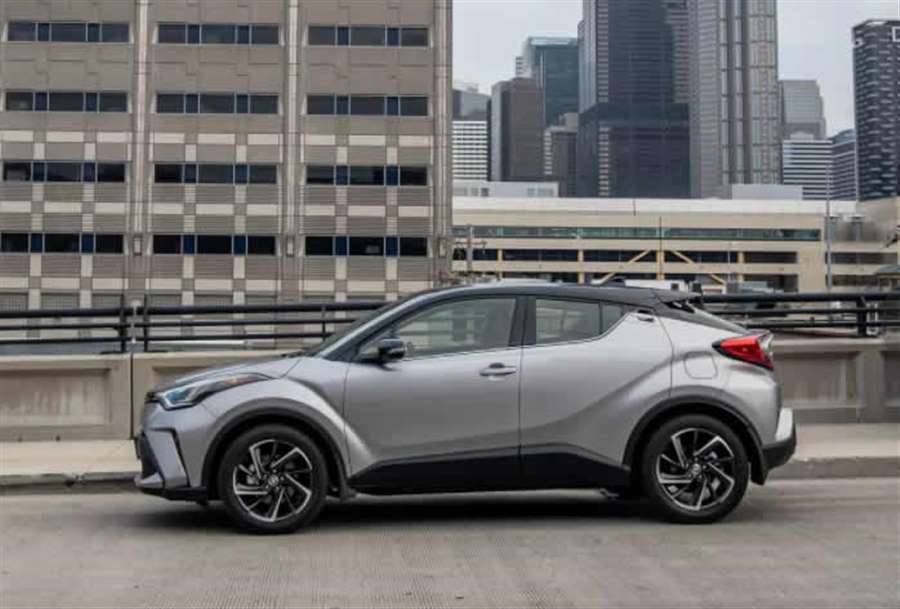
A welcome change since the C-HR’s debut? A backup camera image that appears on the infotainment screen instead of in the rearview mirror. It debuted in the 2019 model.
The C-HR aced the Insurance Institute for Highway Safety’s crashworthiness tests and its vehicle-to-vehicle front crash-avoidance tests. The LED headlights that come standard on the Limited also earned the highest possible rating of good, but the set that comes on the LE and XLE rated poor, IIHS’ lowest rating. (For perspective, mixed ratings — and poor ones — are common for headlights in the institute’s Small SUV class.) The National Highway Traffic Safety Administration gave the C-HR a five-star overall rating, with five stars for front and side impacts and four for rollover resistance.
Our last Car Seat Check, in which the C-HR earned mixed scores, was on a 2018 model. Results should apply to the 2020 C-HR, as well.
Within its class of FWD-only SUVs, the C-HR is one of the most expensive choices, particularly in the Limited trim — our test vehicle approached $30,000. Top trims of the Venue and Kicks, meanwhile, have sub-$25,000 prices, and the Soul Turbo offers more performance for a similar price. While the C-HR is more expensive, though, it does have more standard safety features and one of the more engaging driving experiences.
Expand the choices into small SUVs that do offer all-wheel drive and things get even murkier: The 2021 Kia Seltos, which just won our affordable small SUV comparison, costs only a few hundred dollars more than the C-HR Limited and brings AWD and a more traditional SUV silhouette. More expensive choices include the Mazda CX-30, which is much more enjoyable to drive and has a premium interior but a much less user-friendly infotainment system. The Subaru Crosstrek has a similar lineup of standard safety features and standard AWD, but it can cost more, particularly if you want the new optional 2.5-liter four-cylinder.
What may make the C-HR most appealing in an increasingly crowded field of both front- and all-wheel-drive small SUVs is its combination of unique exterior styling, safety features and sub-$30,000 pricing, particularly if shoppers are considering choices with all-wheel drive.
Source: cars.com
New Nissan X-Terra SUV introduced
The Japanese company talks about this model as "completely new", which should mean that it is something really new, but the truth is a little different. It is a seriously modernized SUV prepared for the 2018 model year, which is called the Nissan Terra. The frame-mounted SUV was developed on the basis of the Nissan Navara pickup truck, which competes in the market with such rivals as the Mitsubishi Pajero Sport or Toyota Fortuner.
The Nissan Terra SUV is sold in China, Thailand, Indonesia and other Asian countries. That is why the new Nissan X-Terra is intended for the countries of the Middle East, and for that reason Terra had to be "withdrawn from the game" in order to be polished in a way to satisfy more demanding customers from these specific markets.
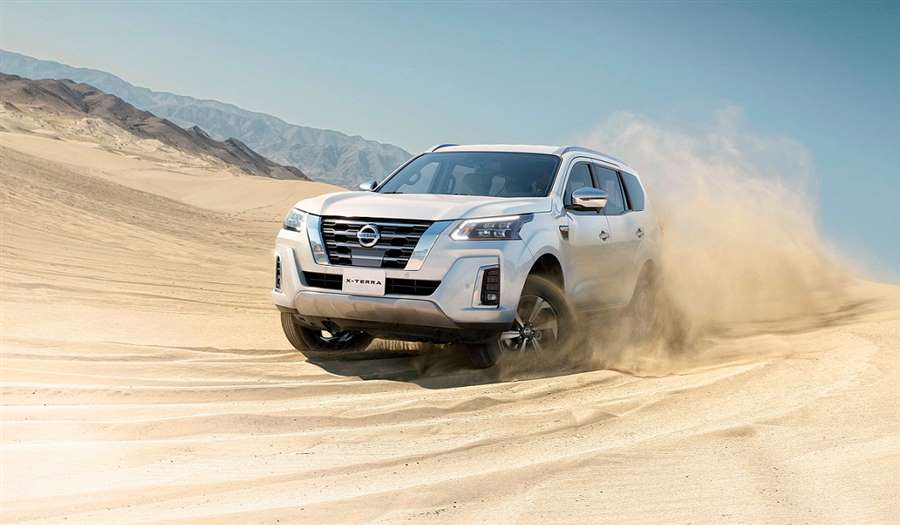
By the way, the constructor reached for the name of the newcomer in the company's archives, albeit with a slight change. The SUV of the same construction configuration was already on the production lines of the company under the name Nissan Xterra, in the period from 1999 to 2015.
The first generation of that vehicle was almost a global model (North and South America, China, Central Asia, the Middle East), but the second generation model is known only to drivers cruising on North American roads.
So, the Nissan X-Terra shown here differs from the original with the Terra sticker in a more seriously modified body style. The muzzle is styled in line with what we saw on the recently updated Patrol model, while the rear end is adorned with various heel doors and lighting in LED technology.
The rims are adorned with a diameter of 17 or 18 inches, while the ground clearance is really enviable and amounts to as much as 243 millimeters. As a result, the restyled 4,900-millimeter-long SUV looks significantly more solid than the donor model.
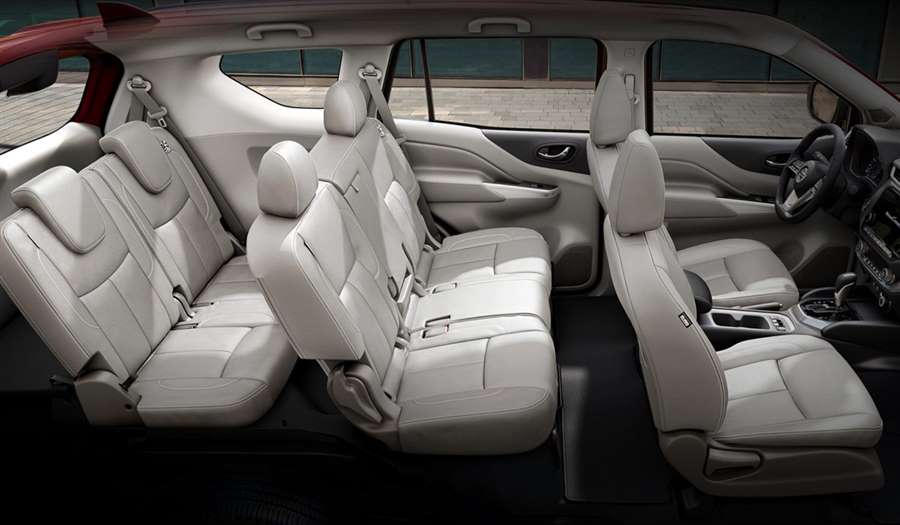
That is why the interior is completely new. If the Terra had an identical front panel as seen on the Nissan Navari pickup, then the X-Terra offers a completely original interior. It is made in the style of modern crossovers of the Japanese brand.
The instrument cluster, with a seven-inch screen, is placed in the middle of that mini panel, while on the central ridge there is another screen of the multimedia system, which can be eight or nine inches diagonally, depending on the configuration.
There is still the third row of seats. The most positioned variant offers an autonomous braking system in critical situations, monitoring of events in the area close to the vehicle, but which is in the driver's blind spot, assistance in maintaining the direction within the traffic lane, as well as some other electronic aids. On top of all the above, it should be said that the sound insulation has also been improved.
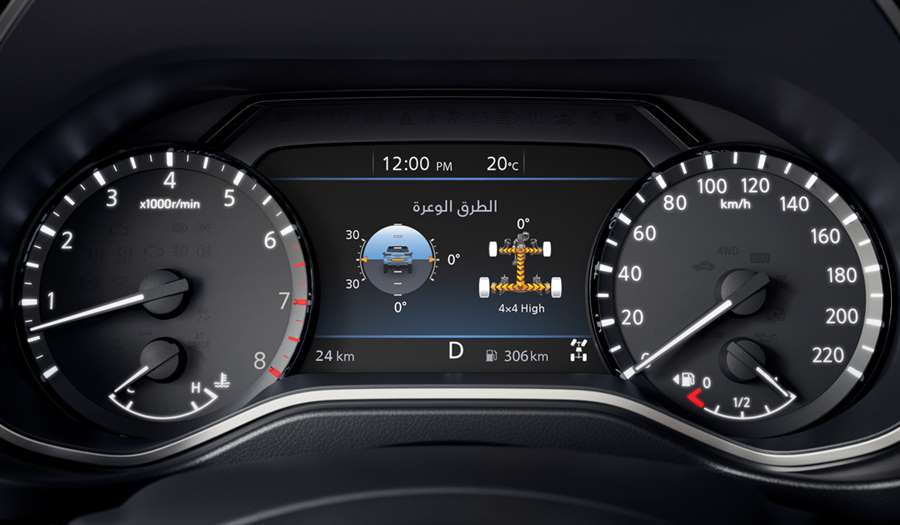
When it comes to the powertrain and chassis, it is necessary to say that these components are identical on the Terra and X-Terra models. The chassis is with double springs at the front and a continuous shaft at the rear end along the coil springs. The drive is on all four wheels with a tight connection and locking of the rear differential. There is also a reducer. There is also an electronic imitation of the lock.
However, the base version of the X-Terra has rear-wheel drive. Since we know that diesels are not at a price in the Middle East, the manufacturer has prepared a petrol, atmospheric 2.5-liter engine for the Nissan X-Terra SUV, which delivers 165 horsepower with 241 Nm of maximum torque. The engine is paired with a seven-speed automatic transmission.
Sales of the new model will begin in December while the starting price will be at the level of 27,200 US dollars. To add that, in Nissan’s global range, Terra and X-Terra will co-exist, and will not overlap in the same market. For example, the Nissan Terra for the 2020 model year was presented in Thailand a few days ago.
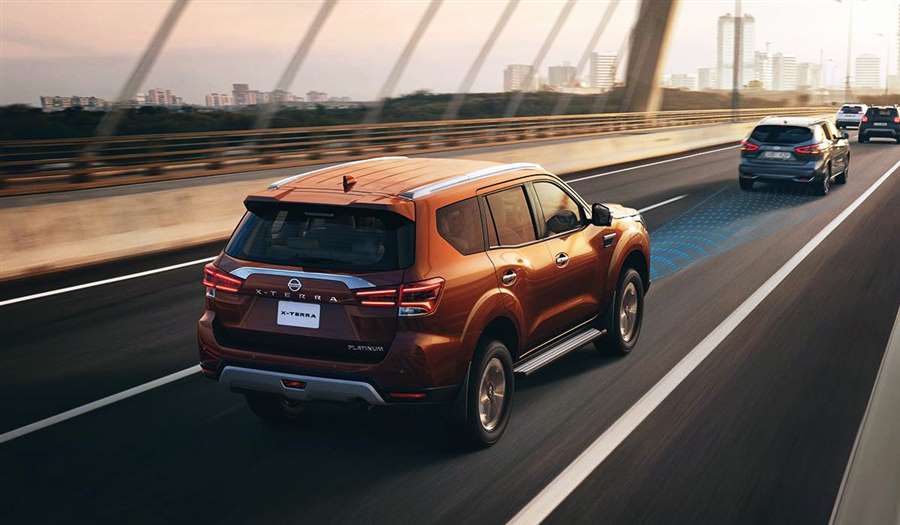
Either way, it’s possible that in a year or two, the Asian Terra will become just as advanced as the X-Terra is today. However, we do not believe that any of these models will reach Serbia, nor the surrounding countries.
2021 Mercedes-Benz E-Class Win Best Car Of The Year
New Mercedes-Benz E-Class has been named Car of the Year by MotorTrend.
This year, the publication gathered together 18 different vehicles and 30 variants, including the likes of the Audi S4, BMW 4-Series, Cadillac CT4, Chrysler Pacifica, Genesis G80, Genesis G90, Kia K5, and the Polestar 2, among others. Six finalists were then chosen; the BMW 8-Series Gran Coupe, Hyundai Sonata, Mercedes-Benz CLA, Mercedes-Benz E-Class, Nissan Sentra, and the Porsche Taycan.
Read More: See The Facelifted 2021 Mercedes-AMG E63 And E53 Sedan, Estate And Cabrio From Every Angle
In determining its Car of the Year, MotorTrend has six key criteria for each car that it tests. These include Advancement in Design, Engineering Excellence, Efficiency, Safety, Value, and Performance of Intended Function. MotorTrend tested the new E-Class in a handful of guises during its 10-day testing programme, including the E 350, E 450, Convertible, Coupe, and the all-conquering E 63 S Wagon. It walked away the winner.
Interestingly, the 2021 E-Class isn’t an all-new car, as many of the other vehicles in the Car of the Year test were. Instead, the 2021 model is a facelift of the W213 generation E-Class that has been in production since earlier 2016. While it may only be a facelift, Mercedes has made significant improvements to the car.
“They could have slapped on some new body panels, updated the engines, and called it a day,” MotorTrend’s Jonny Lieberman said of the 2021 model. “But the engineers went the extra mile. They pulled the all-nighter. Put in the hard work. The result? Car of the Year.”
The MotorTrend team added that the 2021 E-Class is made all the more impressive by the fact that each and every variant and body style excels in all conditions. For example, the pre-facelift E-Class Convertible had terrible cowl shake, according to Lieberman, but the 2021 model “feels like an E-Class: solid, refined, luxurious, better than the competition.”
{vembed Y=dgmefHYvoIQ}
Source: mercedes-world.com
The king of luxury is back - Mercedes-Maibach S class (BIG GALLERY)
Mercedes has introduced the most prestigious edition of the S-Class, namely its Maibach version.
"For those who are looking for something exceptional, what other brands can't offer," say Mercedes representatives when talking about their new flagship. There is a lot to be said about the S-Class, which, with due respect to all competitors, is still a leader in its segment and a car that sets standards.
So, how to raise such a car, which is in itself a synonym for prestige, to an even higher level? The answer lies in the Maibach treatment and attention to the smallest details. So, let’s say every Maibach S class has a unique two-tone body. Painting is done by hand, and this whole process can take up to a week for one car.
As Mercedes says in press materials for the media, the Maibach S-Class is completely subordinated to the passengers in the back seats. Thus, the 18 cm longer wheelbase of this luxury sedan (as opposed to the extended S-Class) gave the addition of comfort for passengers in the rear of the vehicle.
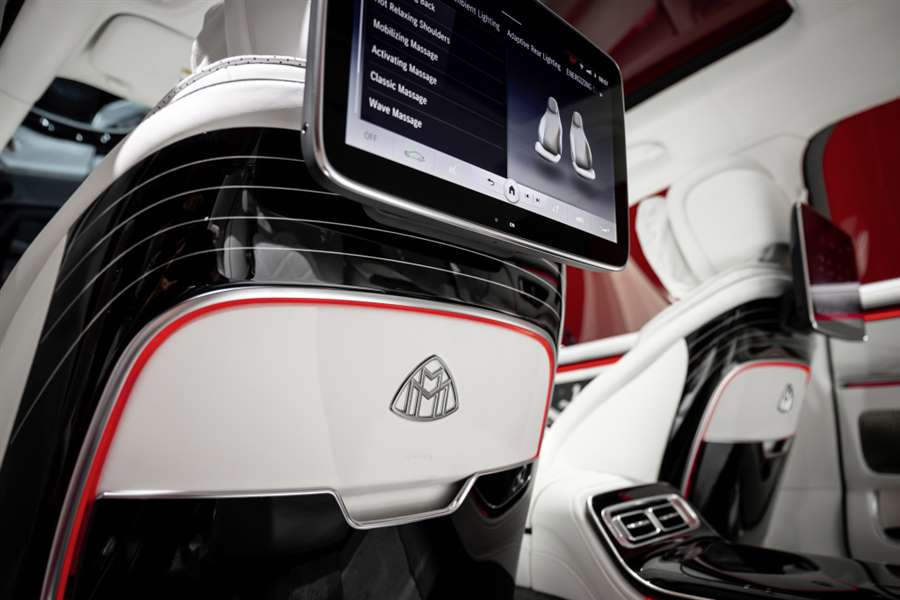
When looking at the exterior of the Maybach version, the differences are clear compared to the standard model. A new grille with vertically placed chrome dividers is placed in front. From the side, we can see that the rear door is larger than the "ordinary" class S, while on the C pillar there is a Maibach mark. Speaking of the last door, it can be opened by pressing a button with the driver's seat, so that the driver does not have to leave the vehicle for passengers to enter.
The digitization that we saw with the new generation S class continued with the Maibach edition, and wherever you look, you can see it on a screen. In front of the driver, then on the center console, in the back of the front seats, between the rear seats ... Of course, the emphasis is on comfort and the comfort will be unprecedented for the passengers in the back.
They are privileged, so they have the possibility of massage in the seats, and even massaging the lower legs, and their seats also have neck heaters. In addition, there is a new ambient lighting system that can be commanded by voice or simple hand gestures. Mercedes especially emphasizes the Maibach S class model, which offers absolute silence in the vehicle.
When it comes to driving, the Maibach S-Class takes over the range of engines that the standard model also offers. So, through six-cylinder units, but also V8 and probably V12 propulsion units. However, not all engines will be available globally, as certain versions will only be reserved for certain markets.
The variant with V8 engine is marked S580 Maibach and is distributed with 496 hp and 700 Nm. Power is transmitted to all points via a nine-speed automatic transmission, there is also a mild hybrid system of 48 V to reduce fuel consumption and emissions. Mercedes has not announced details about the V12 version, and the question remains whether it will be offered at all.
Such a long sedan will not be easily turned in the conditions of urban exploitation, so Mercedes decided to give Maibach variants of steering and rear wheels, which significantly reduces the turning circle. In addition, the S-Class Maibach is a fully adaptable air suspension, which transforms the car from a sporty beast into a comfortable cruiser.
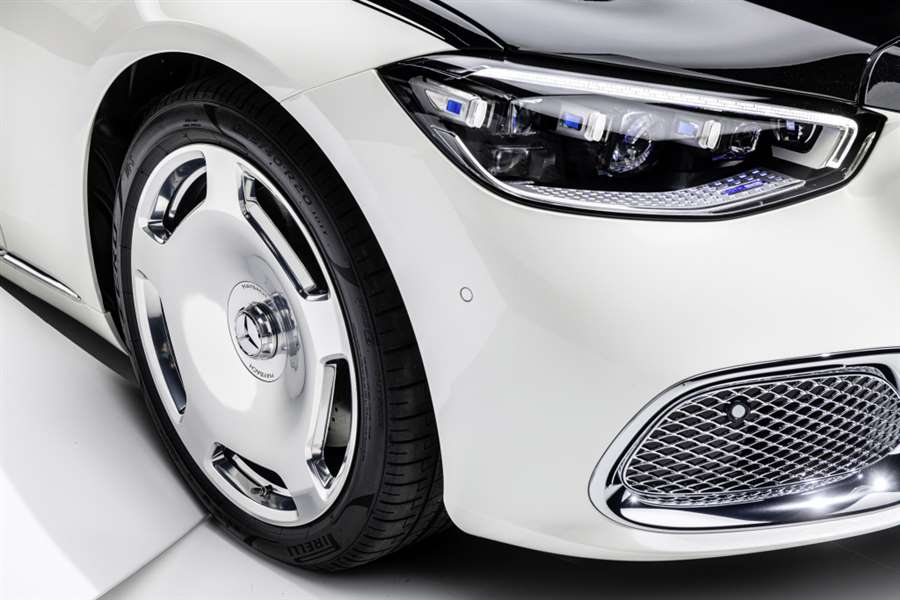
During the presentation, it was announced that it will upgrade the electric counterpart of the S class - EKS, it will have its own version of Maibach, which will include this subbrand in the EV model. Maybach is of great importance for the whole of Mercedes, and the head of this brand, Ola Kelenius, has already announced a further diversification of the offer of ultra-luxury vehicles.
Thus, the Mercedes-Maibach S-Class already boasts excellent sales, especially in China. Since this model hit the market in 2015, more than 60,000 units have been sold, of which about 700 units were delivered in China in 2019. Maybach definitely has a bright future.
2022 Porsche 911 GT3 First Ride Review: Big Talent
Up close and personal with one of the year’s most anticipated driver’s cars.
There's the merest hint of a twitch, caught instantly with the tiniest flick of the wrists. Andy Preuninger keeps his foot down. The corner opens onto a short straight running between trees with hints of the red and gold and brown of autumn among the green. The tach needle swings past 8,000 rpm, a steely manic snarl behind us as Preuninger reaches for the shifter on the center console and plucks the next gear. "A Porsche 911 GT3 is like a human being," he says, watching like a hawk for damp patches on the tarmac. "It likes warmth. It likes operating in the same temperatures we do, 15 to 25 degrees centigrade. When the dampers and the tires are cold it communicates that it's not happy."
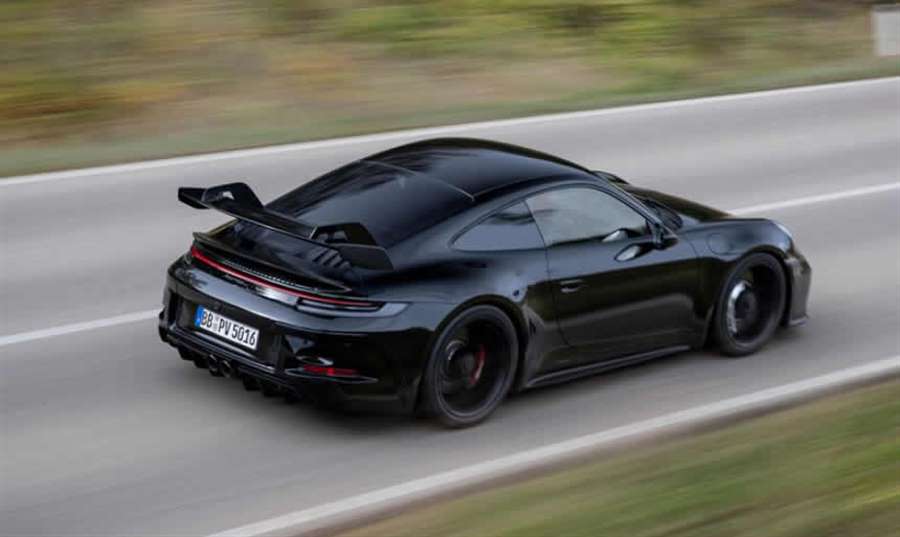
Andreas Preuninger's anthropomorphism is not misplaced: As head of the department that engineers and develops Porsche's high-performance GT models, the 2022 Porsche 911 GT3 is, like every GT3 since the 996.2 model, very much his baby. And from where I'm sitting, in the passenger seat of a lightly camouflaged prototype that Preuninger says is basically 99 percent the production car, it feels a preternaturally talented one.
There's been a lot of anxious speculation about this new 911 GT3. Would the bigger, wider 992 platform degrade the stunning poise and precision, the breathtakingly athletic agility that were the hallmarks of the 991.2 GT3? Would the engine have the same crackle and snarl and instantaneous throttle response? Could it be as pure and as exhilarating a sports car? Preuninger gets it: "The challenge is when you have a car that is as good as the 991.2 GT3, how do you make it better?"
First, keep what works. The 992-series GT3 retains the charismatic naturally aspirated 4.0-liter engine from the previous car. Preuninger won't go into precise details, but there have been tweaks to both the intake and exhaust, and the engine management system has been remapped. Power is up, but not by as much as you might expect: It's basically an iteration of the 2019 911 Speedster engine, which pumped out 502 hp and 346 lb-ft of torque. And yes, it revs to 9,000 rpm.
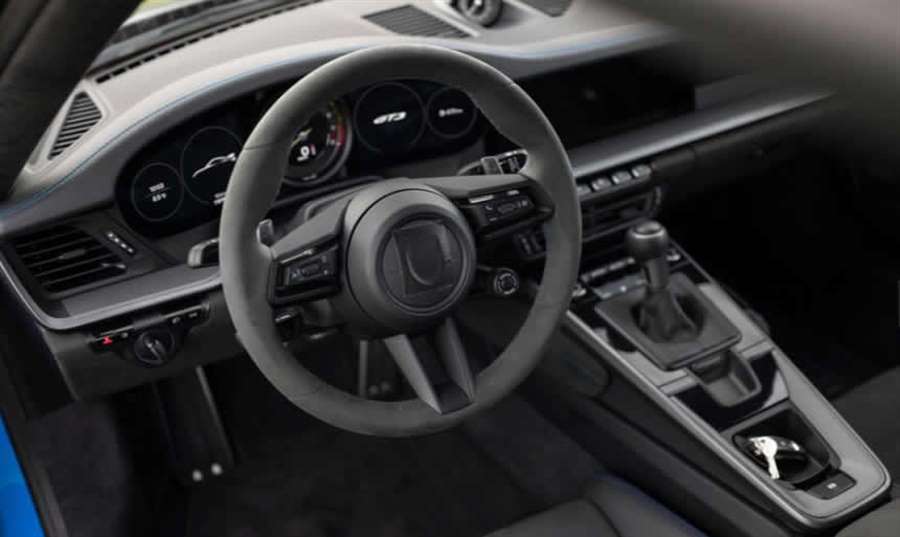
As before, the 2022 911 GT3 will be available with the choice of either a conventional six-speed manual or the PDK seven-speed twin-clutch automatic transmission fitted to our prototype. Both transmissions are carried over from the 991-series GT3, though the PDK gets slightly bigger bearings and a better oiling system, plus a different control module to enable it to work with the 992's new electronic architecture. The manual transmission's ratios are unchanged, but the final drive ratio has been lowered to account for the 992's 21-inch rear wheels.
Keep what works, then think about what can be improved. The 992 platform means the new GT3 has a wider track front and rear. The rear axle is basically upgraded 992-spec hardware, with the rear-wheel steering system as standard. Up front, however, is an all-new multi-link suspension, the first ever on a 911 road car. Derived from the 911 RSR racecar front axle, it's unique to the new GT3, though it's logical to expect the hardware will also appear under the forthcoming 992-series 911 GT2. It's the biggest single engineering change over the old GT3, says Preuninger, and it drove a lot of the chassis development work.
What's noticeable, as we hammer along some of the surprisingly rough and ready roads near Porsche's Weissach engineering center, is not just how crisp, how responsive, how alert this new GT3 feels, even from the passenger seat, but also how well it rides on its Michelin Pilot Sport Cup 2 R tires. The 911 GT3 is not soft—you feel exactly what's happening underneath—but it's not harsh and jittery, even at modest velocities. Preuninger nods when I comment. "Some people confuse stiffness with sportiness," he says. "A wheel needs freedom to travel. Some performance cars are so stiff they feel dead at low speed." This GT3 feels very much alive.
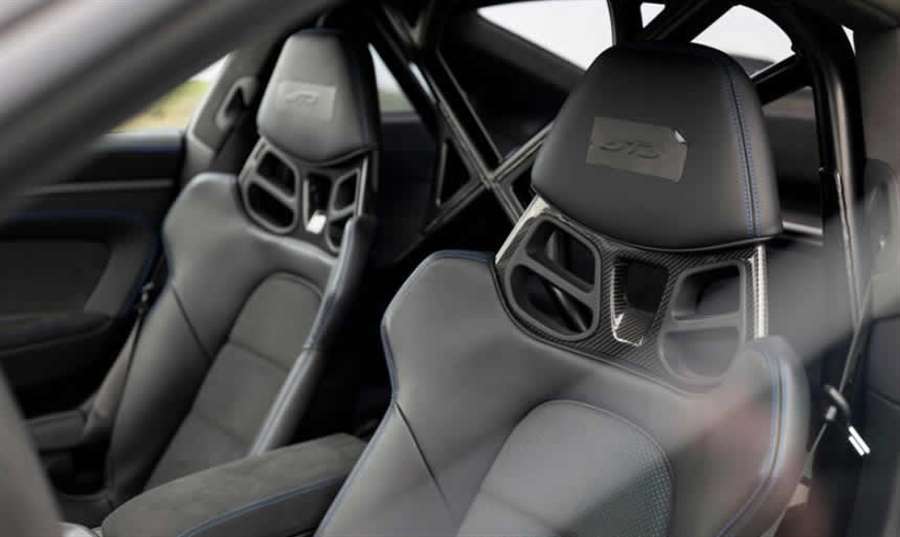
A look around the undisguised interior of the new GT3 reveals it to be, apart from the obvious GT-spec hardware such sports seats and a half roll-cage, basically 992, with one notable—and welcome—difference. The small, soulless toggle switch used to select drive or reverse in PDK-equipped 992s has been replaced by a shifter that looks almost identical to the manual one. "You have to check that it has three pedals, to make sure," grins Preuninger, who prefers using a shifter on the center console to paddles on the steering wheel, even in PDK-equipped GT3s and GT2s.
Front and center in the new instrument panel is an analogue tach that reads to 10,000 rpm, flanked by screens either side that can show all the information you get in a regular 911. There's a special GT configuration that pares back that info to the minimum a race driver wants: Tire pressures and water temp on the left hand side and oil temperature, oil pressure and fuel level on right hand side. And curving around lower rim of tach are shift lights that appear in Sport manual mode comprising thin yellow graduations that build in height then flash blue at the upshift point.
The scanty exterior disguise doesn't hide much, but it doesn't reveal all the new GT3's secrets, either. A quick look around reveals the front fenders, doors, roof and rear quarter panels are shared with regular 911s. A new front bumper features a large central air intake and slim air-curtain vents on either side that direct air through the front wheel well. The front hood is carbon fiber, and features vents at the leading edge to bleed hot air from the radiators. In previous 911 GT3s hot air was vented through slots at the top of the bumper, but the 992's more complex frontal structure meant there was no room for that solution on the new car.
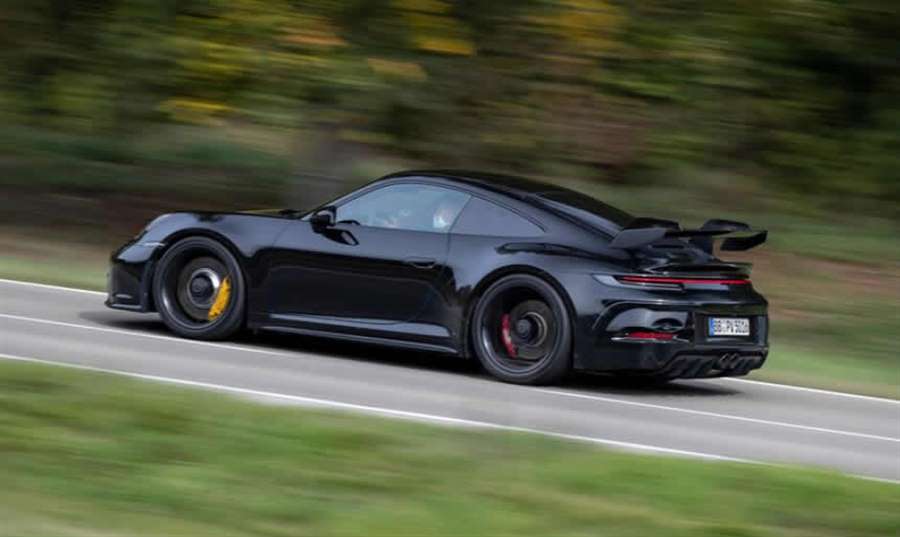
The GT3's rear view is dominated by a giant wing suspended beneath two stanchions that rise up from either side of the engine cover. The wing set the internet buzzing the moment the first prototypes were spotted, and a lot of the buzz from the hot take commentariat was less than favorable. The wing is not a fashion statement. It's pure racing technology. Because the underside of the wing is the most critical surface in terms of generating downforce, the top mount system makes it more aerodynamically efficient and effective. And while I can't give you any detail, what I can say you haven't seen the wing stanchions in their production form yet. Undisguised, they are works of art.
Under the wing is a new engine cover with a ducktail. When the rear wing is in the most aggressive of its three settings, its underside profile and the profile of the ducktail are a mirror image. The ducktail helps manage the laminar flow over the roof, to the point that the ram air scoops that featured on the 991 versions of the GT3 are not needed. Air goes into the engine intake via the vents at the base of the rear window. Preuninger says the old-style scoops would have interfered with the efficiency of the rear wing.
Before we head back to Weissach the man who's been instrumental in creating some of the greatest 911s ever built eloquently sums up what he believes to be the essence of a Porsche 911 GT3. "It has to be a joy to drive," he says. "It must be communicative, transparent, honest, at any speed. It has to scream 'drive me'."
Even from the passenger seat I hear that scream. I can't wait to drive the 2022 Porsche 911 GT3.
Source: motortrend.com
Honda Civic Prototype Revealed, and It’s Pretty Much the 2022 Civic
Honda parlayed its sponsorship of esports, where it’s the official automotive sponsor of Team Liquid, to reveal the prototype of the next generation of its popular (and Cars.com comparison-winning) Civic compact car on the streaming platform Twitch. If you don’t know what Twitch is, ask your kids or U.S. Rep. Alexandria Ocasio-Cortez, D-N.Y.
Taking a page from Nissan and its Z Proto, the Civic prototype isn’t a fanciful concept but a very close to production-ready look at the new Civic sedan we’ll see early in 2021. We’ll have to wait longer to see the hatchback, however (Honda already axed the coupe). We’ll also need to wait for details on performance versions like the Si or the Type R. But enough about what this prototype isn’t — let’s talk about what it is.
Updated Exterior Styling
Up front, the Civic prototype ditches the current version’s large, fake “air intakes” at the corners of the bumper for angular elements that sit beside the split grille’s larger lower front opening. Slimmer-looking headlights give the prototype a sportier look than the current Civic’s non-Si or Type R design.
Along the sides are subtle, sculpted lines that evoke the new Acura TLX or, outside of the Honda family, Lexus IS, giving the prototype a more premium look. For wheels, Honda chose a set of black five-spokes that offset the metallic orange paint, a belated taste of Halloween. The rear forgoes the current Civic’s chevron taillights extending to the decklid for more traditional-looking thin units. The roofline borrows a lot of the current Accord, with a slope that blurs the line between sedan styling and liftback or hatchback styling.
Honda also wanted to improve cabin visibility and moved the A-pillars rearward, out of the driver’s line of sight. It also mounted the side mirrors to the doors for a clearer view out the side windows.
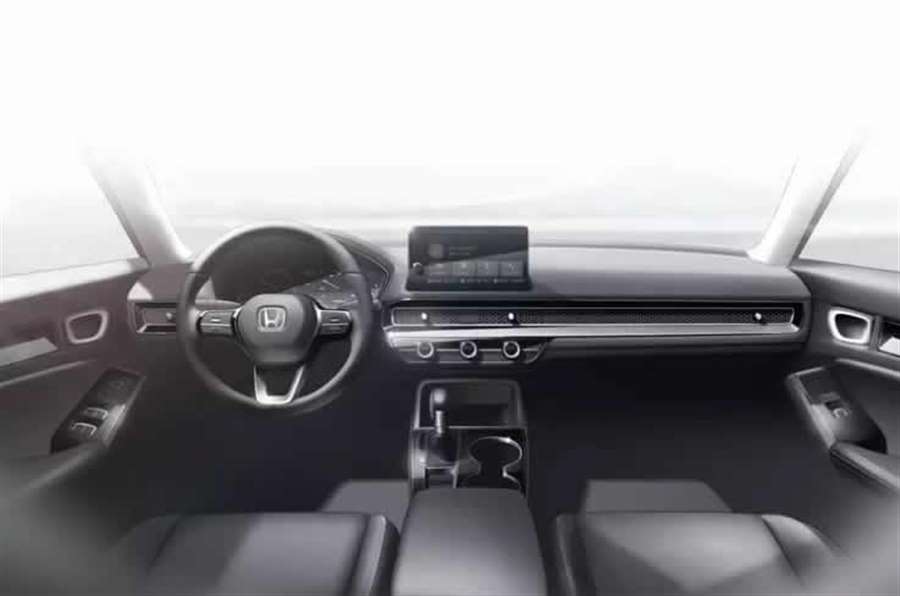
Cleaner Aesthetic Inside
Unlike the exterior, Honda only provided a sketch of the prototype’s interior, but it shows a cleaner and simpler look reminiscent of the e Prototype electric city car. New technologies that will debut on the next Civic include a digital instrument cluster and a 9-inch infotainment screen. A bummer: The infotainment screen shows only one physical control, likely the volume knob.
An interesting design touch is a single honeycomb mesh insert that runs horizontally across the length of the dashboard, concealing the air vents without impeding air flow because Honda deemed the vents “visually busy.”
Safety First
Safety remains a priority for Honda with the next Civic, starting with as-of-this-writing “multiple new active and passive safety systems,” including unspecified updates to the Honda Sensing suite of safety tech and “new airbag designs.”
Honda also said it updated the body structure to improve occupant and pedestrian protection in a collision. The more rigid body structure will also improve the Civic’s driving dynamics, Honda claims.
Pricing, Release Date and Other Things We Don’t Know Yet
Since this is a prototype, that does mean some details aren’t clear yet. We don’t know how powerful the next Civic’s engines will be, though Honda says they will be more powerful and more fuel-efficient. Transmission choices are also unclear, though the interior drawing shows an automatic gear selector. We also don’t have a clear picture regarding pricing, the aforementioned hatchback or performance variants.
Honda says the 2022 Civic will arrive in the late spring of 2021. Between now and then, we’ll likely see the additional variants, get more details about the official production version and, if we’re lucky, be able to drive it and tell you what it’s like.
Source: cars.com

